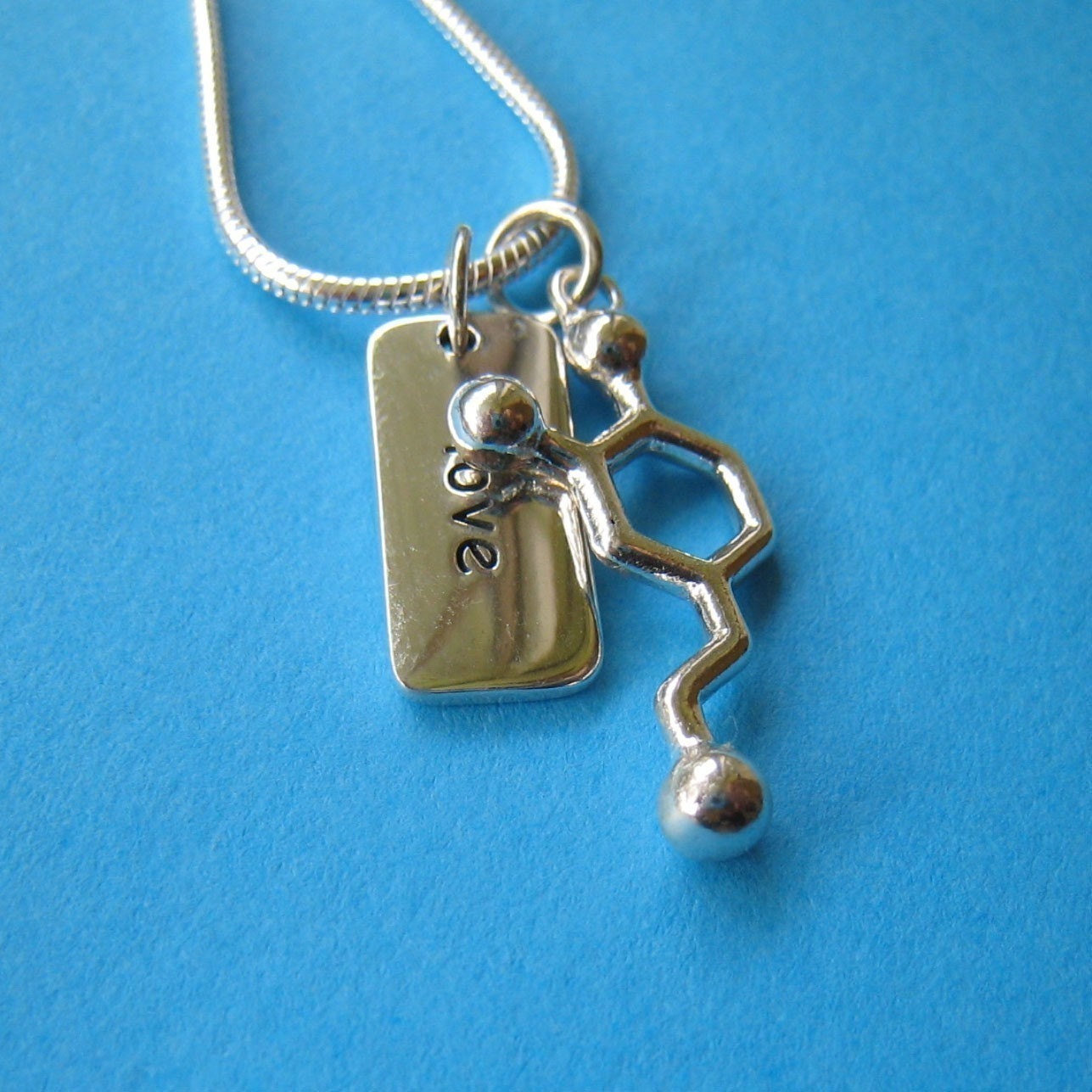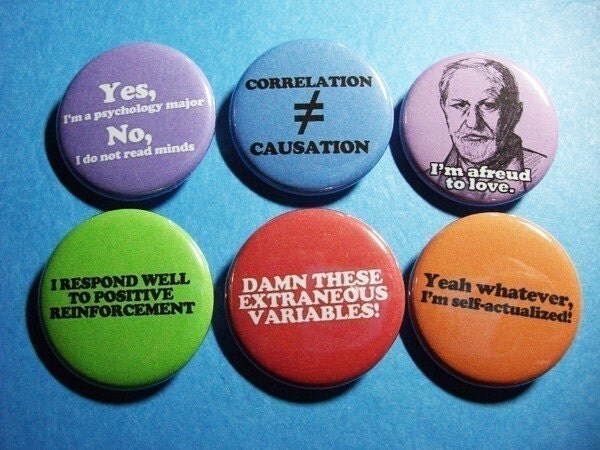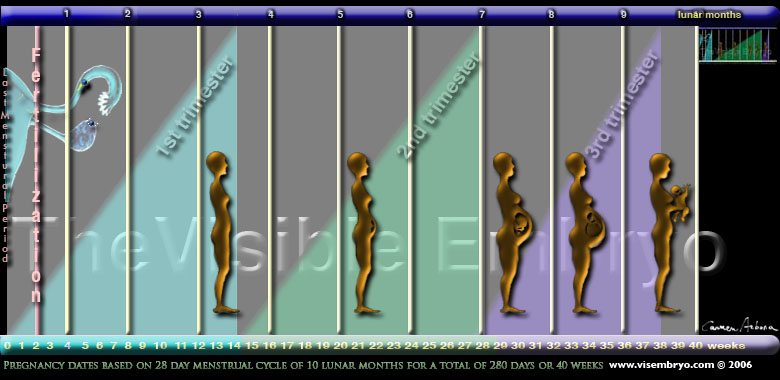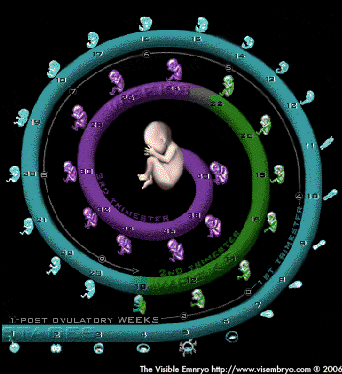A resource for any teacher of high school psychology, whether AP, IB or Introduction to Psychology
Wednesday, December 30, 2009
New Organizational Tool for the THSP Blog
This new format will make it easy to search the blog for resources for a certain unit--one click and you can have access to all of them, regardless of the topic. The new format and list is in the left-hand column for ease of use.
Our new tabs look like this:
01 History and Approaches
02 Research Methods
03 Biological Bases of Behavior
04 Sensation and Perception
05 States of Consciousness
06 Learning
07 Cognition (includes memory)
08 Motivation and Emotion (includes health, stress, coping, and sexuality)
09 Developmental Psychology
10 Personality
11 Testing and Personality Differences (includes intelligence)
12 Abnormal Psychology
13 Treatment of Psychological Disorders
14 Social Psychology
You can still search the blog for specific topics, but this overall format should help streamline finding resources by topic. Please feel free to share any feedback about this or any other changes.
Falling in and Out of Love
In today's encore excerpt - the neural and chemical basis of love. Why doesn't passionate love last? - because we develop a chemical tolerance:
"Anthropologist Helen Fisher ... has devoted much of her career to studying the biochemical pathways of love in all its manifestations: lust, romance, attachment, the way they wax and wane ... [In her studies] when each subject looked at his or her loved one, the parts of the brain linked to reward and pleasure - the ventral tegmental area and the caudate nucleus - lit up. ... Love lights up the caudate nucleus because it is home to a dense spread of receptors for a neurotransmitter called dopamine ... which creates intense energy, exhilaration, focused attention ... [thus] love makes you bold, makes you bright, makes you run real risks, which you sometimes survive, and sometimes you don't. ...
"Researchers have long hypothesized that people with obsessive-compulsive disorder (OCD) have a serotonin 'imbalance.' Drugs like Prozac seem to alleviate OCD by increasing the amount of this neurotransmitter available at the juncture between neurons. [Researchers] compared the lover's serotonin levels with those from the OCD group and another group who were free from both passion and mental illness. Levels of serotonin in both the obsessives' blood and the lovers' blood were 40 percent lower than those in normal subjects. ... Translation: Love and mental illness may be difficult to tell apart. ...
"Why doesn't passionate love last? ... Biologically speaking, the reasons romantic love fades may be found in the way our brains respond to the surge and pulse of dopamine ... cocaine users describe the phenomenon of tolerance: the brain adapts to the excessive input of the drug ... From a physiological point of view, [couples move] from the dopamine-drenched state of romantic love to the relative quiet of the oxytocin-induced attachment. Oxytocin is a hormone that promotes a feeling of connection, bonding."
Lauren Slater, "Love: The Chemical Reaction," National Geographic, February 2006, pp. 35-45
Tuesday, December 29, 2009
Letters of Recommendation
While I am no expert, based upon what I have seen on college forms, I tend to use the following points as I write:
- Who the student is and the purpose of the letter
- How I know the student-context, length of time and how well
- Personality characteristics of the student
- Highlighting the academic record of the student
- Highlighting the community service and activities of the student
- Experiences that I know about--how they have helped the student grow as a person/student
- How the above points will make the person successful in college/worthy of the scholarship
- Reiteration of positives and contact information
When in doubt, I say something like, "I'm not sure I know you well enough to write a letter that will be good/effective enough for you. Try checking with other teachers who have known you longer."
I also ask the student to provide me with an unofficial transcript, an activities sheet (like a resume), and some sort of self-reflection on the kinds of things they would like me to be able to provide them. I also ask for two weeks.
What do all of you think? It would be great to hear from all those letter writers so we can share our collective wisdom and experience.
Chuck
BEA Block Grants for 2010
 The following is from Martha Boenea of the APA's Education Directorate:
The following is from Martha Boenea of the APA's Education Directorate:The Board of Educational Affairs (BEA) is awarding $5,000 in grants in 2010 to support conferences on enhancing the quality of undergraduate education in psychology and advancing the teaching of psychology at the secondary, two-year, or four-year level. To be considered for funding, the conference must be directed by an APA member, associate or affiliate. The grant may be used to offset travel expenses of selected conference participants, registration fees of conference participants and speaker fees.
Applicants may receive up to $1,000 during a given year. However, if fewer than five acceptable applications are received in a given year, the BEA may award more than one block grant to the same conference in that year.
Funding requests for teaching conferences in 2010 should be postmarked by Feb. 15. Send written requests to Martha Boenau, Education Directorate, at the APA address below.
Martha Boenau, Associate Directory, Office of Precollege and Undergraduate Programs
Education Directorate
American Psychological Association
750 First Street NE, Washington, DC 20002-4242
Tel: (202) 336-6140 Fax: (202) 336-5962
mboenau@apa.org | www.apa.org
Tuesday, December 22, 2009
The Autistic Savant: Kim Peek-The Original Rainman
As you check that site out, there is a list of other notable Savants such as Stephen Wilshire and those with Autism including Temple Grandin. The site is a fantastic resource for our students looking for more information that is not dealt with in our textbooks.
Psych Movies Site-Great Resource
Saturday, December 19, 2009
Gifts for the psych teacher on your list
You can find some "brainy" shirts at Threadless.com, including Bird Brain and Connect It:


Uncommon Goods features a number of items for the psychoanalyst in you. Here are Freudian Slippers, psychoanalyst finger puppets and the always popular Tickle Me Freud, as well as the Rorschock party game and Mind Games (A Box of Psychological Play).
 |  |  |
 |  |
For more unique psych-related gifts check out the people who make lots of handmade stuff on Etsy. For example, by plugging in the keyword "psychology" I was able to find among other things dopamine jewelry and some really cool buttons. Keep in mind these are in limited quantities but they may be far more unique than the other options above.
 |  |
So what about you -- where do you get your favorite psych-related gifts? Or what's on your wish list this year? Please share your ideas in the comments below!
Friday, December 18, 2009
Milestones Reached
 Just before the Thanksgiving Break I put up a posting detailing how the Teaching High School Psychology Blog was rapidly approaching a number milestones. It is somehow appropriate that just before we reach the Holiday Break, I can report to you a number of those points have been reached. They include:
Just before the Thanksgiving Break I put up a posting detailing how the Teaching High School Psychology Blog was rapidly approaching a number milestones. It is somehow appropriate that just before we reach the Holiday Break, I can report to you a number of those points have been reached. They include:- reaching the 300th posting for the blog since we started in February, 2009,
- having over 50 followers of the blog (Thanks to everyone for joining the group),
- and having over 200 people signed up to receive the THSP blog via email.
Midnight Postings Taking a Break
 Today's Midnight Posting, "The Whole Child PBS Series", will be the last for 2009. The postings will be taking a two week hiatus to enjoy the holidays and some time away from the Internet. They will resume on January 4th. Please be aware this notice only pertains to the Midnight Postings. Continue to check in with the THSP Blog throughout the holiday break for other postings.
Today's Midnight Posting, "The Whole Child PBS Series", will be the last for 2009. The postings will be taking a two week hiatus to enjoy the holidays and some time away from the Internet. They will resume on January 4th. Please be aware this notice only pertains to the Midnight Postings. Continue to check in with the THSP Blog throughout the holiday break for other postings.All of us here at the Teaching High School Psychology blog wish everyone a fantastic holiday season and restful break. Thanks so much for all your support. We hope 2010 proves to be even better than 2009.
The Whole Child PBS Series


Though over ten years old now, The Whole Child: A Caregiver's Guide to the First Five Years video series from PBS still contains a fair amount of good information. Any of the 13 video segments can be streamed into the classroom via www.learner.org.
For the video series, The Whole Child: A Caregiver's Guide to the First Five Years go to http://www.learner.org/resources/series59.html
For information on the accompanying website at PBS go to The Whole Child Website at http://www.pbs.org/wholechild/ Make it a point to check out the "The ABC's of Child Development" section of the site. It contains four fantastic chart summaries of different areas of development.
Thursday, December 17, 2009
Utah Education Network
 In my searching for Midnight Postings on developmental psychology, I came across a website called the "Utah Education Network". Perhaps the Utah visitors to the THSP Blog can provide us with more information on this group in the comments section below.
In my searching for Midnight Postings on developmental psychology, I came across a website called the "Utah Education Network". Perhaps the Utah visitors to the THSP Blog can provide us with more information on this group in the comments section below.After a little digging, I came across a section devoted to lesson plans. The Social Studies section had nothing for psychology, but the Family and Consumer Sciences Education section had over thirty lessons devoted to Child Development.
While I doubt if any of these child development lessons could transfer directly to a psychology course, I have a feeling there are a few "gems" in there. My thought was, with a major break coming next week, some of you who frequent the THSP Blog might have the opportunity to do some "mining" of those lessons and either leave your results in the comments section or email them to me for a posting.
The Family and Consumer Sciences Education page can be found at http://www.uen.org/Lessonplan/LPview.cgi?core=20
Wednesday, December 16, 2009
Parenting Me Website
 The Parenting Me Website, written by Dr. Brenda Hussey-Gardner, provides a wealth of information on a child's development from birth to age four. Information can be viewed by specific areas of development (i.e. motor development), by milestones (specific ages) or Helpful hints. All the articles are written from the child's point of view with many students may find the interesting.
The Parenting Me Website, written by Dr. Brenda Hussey-Gardner, provides a wealth of information on a child's development from birth to age four. Information can be viewed by specific areas of development (i.e. motor development), by milestones (specific ages) or Helpful hints. All the articles are written from the child's point of view with many students may find the interesting.The home page of the Parenting Me website can be found at http://www.parentingme.com/ which is sponsored by the VORT Corporation which includes a number of child development resources at http://www.vort.com/
Tuesday, December 15, 2009
Piaget and YouTube
 If you do a search on YouTube for "Piage
If you do a search on YouTube for "Piage t", the result will include hundreds of clips. Below are four short clips for each of Piaget's stages of cognitive development.
t", the result will include hundreds of clips. Below are four short clips for each of Piaget's stages of cognitive development.Piaget - Stage 1 - Sensorimotor, Object Permanence (1:03)
http://www.youtube.com/watch?v=ue8y-JVhjS0&feature=related
Piaget - Stage 2 - Preoperational, Lack of Conservation (2:16)
http://www.youtube.com/watch?v=GLj0IZFLKvg&feature=related
Piaget - Stage 3 - Concrete - Reversibility (0:56)
http://www.youtube.com/watch?v=gA04ew6Oi9M&feature=related
Piaget - Stage 4 - Formal - Deductive Reasoning (0:58)
http://www.youtube.com/watch?v=zjJdcXA1KH8&feature=related
Please leave a comment if you are aware of other, especially better, video clips on Piaget.
Monday, December 14, 2009
David Myers Webinar - December 16th
 Later this week, Bedford, Freeman and Worth Publishing Group is sponsoring a Webinar for high school psychology teachers featuring David Myers, author of Psychology, Psychology in Everyday Life, and the soon to be released Myers Psychology for AP.
Later this week, Bedford, Freeman and Worth Publishing Group is sponsoring a Webinar for high school psychology teachers featuring David Myers, author of Psychology, Psychology in Everyday Life, and the soon to be released Myers Psychology for AP.David's talk, "Positive Psychology and the Scientific Pursuit of Happiness" will be on Wednesday, December 16th from 4:30 to 5:30 pm EST. Please make sure to adjust for your time zone.
For more information or to sign up for the Webinar, email Nicole Sheppard at nsheppard@bfwpub.com
CDC Growth Charts
 The Centers for Disease Control and Prevention have a host of materials regarding growth charts for children. The materials include publications, a host of different charts, Powerpoint presentations, reports, and much, much more.
The Centers for Disease Control and Prevention have a host of materials regarding growth charts for children. The materials include publications, a host of different charts, Powerpoint presentations, reports, and much, much more.I have found growth charts are a fantastic way to discuss physical development. The home page for the CDC's section on growth charts can be found at http://www.cdc.gov/growthcharts/Default.htm
Sunday, December 13, 2009
Childhood Schizophrenia on Oprah
I went to Oprah's site to see what was there--I was surprised to find some videos, but many resources for parents and others who are dealing with the difficult situation. There is also an interview with Dr. Judith Rapoport, an expert in child psychiatry. While this goes beyond the level of schizophrenia I cover in class, I see how this could benefit all of us for background. Videos are on this page. Fascinating. Disturbing. Scary.
Friday, December 11, 2009
Prenatal Development Slides
 Tom Day from Weber State University has developed a online interactive presentation of prenatal development. The presentation is designed to supplement an online Human Development course. The opening page can be found at
Tom Day from Weber State University has developed a online interactive presentation of prenatal development. The presentation is designed to supplement an online Human Development course. The opening page can be found athttp://departments.weber.edu/chfam/Prenatal/default.htm
The Department of Child and Family Studies is located at http://weber.edu/COE/chfam.html
Thursday, December 10, 2009
Online Videos as a Resource
Dying to Be Thin
http://www.pbs.org/wgbh/nova/thin/program_t.html
Life's Greatest Miracle
http://www.pbs.org/wgbh/nova/thin/program_t.html
Ape Genius
http://www.pbs.org/wgbh/nova/apegenius/program.html
PBS Frontline Viewing Portal--for all shows
http://www.pbs.org/wgbh/pages/frontline/view/
Inside the Teenage Brain
http://www.pbs.org/wgbh/pages/frontline/shows/teenbrain/view/
The Merchants of Cool
http://www.pbs.org/wgbh/pages/frontline/shows/cool/view/
American Experience--Jonestown and others
http://www.pbs.org/wgbh/americanexperience/onlineFilms/theme/popculture/
Language Development in Children
 The Children Development Institute in Orange, CA has developed a chart listing the "typical" language for a child develops from six months to eight years old. The site can be found at http://www.childdevelopmentinfo.com/development/language_development.shtml
The Children Development Institute in Orange, CA has developed a chart listing the "typical" language for a child develops from six months to eight years old. The site can be found at http://www.childdevelopmentinfo.com/development/language_development.shtml
Wednesday, December 9, 2009
Mayo Clinic Child Development Chart
 While the formatting of this chart is not ideal for classroom use, it still provides a wealth of information on a new born child's development. Perhaps someone would be able to reformat the material into a table and post the document on the 4Shared file sharing account at http://www.4shared.com/dir/10555367/29577282/sharing.html If you do, please include your name at the beginning of the file name and upload the file into the Developmental Psychology folder. Thanks in advance to the person willing to take on this project.
While the formatting of this chart is not ideal for classroom use, it still provides a wealth of information on a new born child's development. Perhaps someone would be able to reformat the material into a table and post the document on the 4Shared file sharing account at http://www.4shared.com/dir/10555367/29577282/sharing.html If you do, please include your name at the beginning of the file name and upload the file into the Developmental Psychology folder. Thanks in advance to the person willing to take on this project.The Mayo Clinic's Developmental Chart is located at http://www.mayoclinic.com/health/child-development/MY00136
Tuesday, December 8, 2009
Bill Nye and Pseudoscience

Monday, December 7, 2009
UPDATE: Clips for Class is now operational

Tobacco, Alcohol, Drugs and Pregnancy
 The American Congress of Obstetricians and Gynecologists publishes a pamphlet on the effects of tobacco, alcohol and drugs on a pregnancy. The pamphlet can be read online or converted into a "printer friendly" format for mass production. Even though the article is written to a pregnant women, students can come away with a wealth of material. The pamphlet is located at http://www.acog.org/publications/patient_education/bp170.cfm
The American Congress of Obstetricians and Gynecologists publishes a pamphlet on the effects of tobacco, alcohol and drugs on a pregnancy. The pamphlet can be read online or converted into a "printer friendly" format for mass production. Even though the article is written to a pregnant women, students can come away with a wealth of material. The pamphlet is located at http://www.acog.org/publications/patient_education/bp170.cfm
Sunday, December 6, 2009
Louis Wain and the Cat Paintings from Psychosis

I've been fascinated by the Louis Wain pictures of cats that he allegedly drew while increasingly being affected by psychosis. In fact, the four-picture progression is in both my regular and AP textbooks. Wain, to my surprise, was a long-time artist who drew cats with human expression for some years. One set of pictures is here. According to Mindhacks, the progression is false and they make their case with a history of Wain and his psychosis with more detail than I ever knew existed about the artist. Fascinating. This publisher site has more detail about Wain's life and more drawings of his cats. Mindhacks also has this link to more Wain work. Enjoy.
Friday, December 4, 2009
American Psychological Foundation Pre-College Psychology Grant Program
 PRE-COLLEGE PSYCHOLOGY GRANT PROGRAM
PRE-COLLEGE PSYCHOLOGY GRANT PROGRAMAmerican Psychological Foundation (APF)
The APF provides financial support for innovative research and programs that enhance the power of psychology to elevate the human condition and advance human potential both now and in generations to come. It executes this mission through a broad range of scholarships and grants. For all of these, it encourages applications from individuals who represent diversity in race, ethnicity, gender, age, disability, and sexual orientation.
The Pre-college program awards grants to individuals or institutions to advance psychological science in high schools. Its description, application requirements, and procedures appear below.
Description
This program provides financial support for efforts aimed at improving the quality of education in psychological science and its application in the secondary schools. Proposals must focus on supplying education for talented high school students.
Program Goals
- Improve the quality of high-school education in psychology
- Encourage talented high school students to pursue careers in psychology
Funding Specifics
- Up to $20,000 annually
Eligibility Requirements
- Educational institution, 501(c)(3) nonprofit organization, or individual affiliated with qualifying institution
Evaluation Criteria
- Conformance with stated program goals
- Nature and magnitude of incremental contribution
- Capability for accomplishing the proposed work
- Likelihood of producing generalizable outcomes
Proposal Requirements
- Description of proposed project to include goal and its relation to the institution’s mission and target population, qualifications for execution, other participants and respective roles, intended outcomes and plan for achieving them, extent to which outcomes may generalize
Format: not to exceed 7 pages (1 inch margins, no smaller than 11 point font)
- Timeline for execution
- Full budget and justification (indirect costs not permitted)
- Current CV for project leader
Submission Process and Deadline
Submit a completed application online at http://forms.apa.org/apf/grants/ by May 1, 2010.
Questions about this program should be directed to Kim Palmer Rowsome, Program Officer, at krowsome@apa.org.
Video on SIDS Prevention
 The U.S. National Library of Medicine and the National Institutes of Health through their Medline Plus program has a short and to the point (1:41) video clip on the prevention of Sudden Infant Death Syndrome (SIDS). The video provides a short description of SIDS and ways for parents to prevent their child being the victim of crib death.
The U.S. National Library of Medicine and the National Institutes of Health through their Medline Plus program has a short and to the point (1:41) video clip on the prevention of Sudden Infant Death Syndrome (SIDS). The video provides a short description of SIDS and ways for parents to prevent their child being the victim of crib death.The clip can be found at http://www.nlm.nih.gov/medlineplus/videos/news/sids_102009.html For more information on SIDS go to http://www.nlm.nih.gov/medlineplus/suddeninfantdeathsyndrome.html
Thursday, December 3, 2009
Mindstorm and Schizophrenia

The following link is to a page by Janssen.com, a pharmaceutical subsidiary, describing the virtual reality tour to illustrate using all the senses how life might feel to one who is schizophrenic. The video has several disclaimers and warnings as well as a first-person video account of a day in the life of one person. I used it recently in class to highlight what it might be like for one who suffers from multiple symptoms. My students had a variety of reactions from "weird" to "that's scary" and "that's intense." Along with much contextualizing that I did, the students got a sense of mostly auditory hallucinations.
http://www.janssen.com/janssen/news_mindstorm.html
The site describes it this way:
A Virtual Hallucination: MINDSTORM is an invaluable teaching aid for medical students, physicians, the healthcare community, and law enforcement personnel. The simulation has the potential to create empathy for a frightening condition that most people can barely imagine.
It is worth a preview for a possible inclusion for your unit on disorders
The Visible Embryo

 The Visible Embryo takes a visual tour through prenatal development from fertilization to birth. For each of the various periods of the pregnancy, basic information is provided about fetal size, weight and development. The site also includes a chart detailing prescription drugs on fetal development. The Visible Embryo can be found at http://www.visembryo.com/baby/index.html
The Visible Embryo takes a visual tour through prenatal development from fertilization to birth. For each of the various periods of the pregnancy, basic information is provided about fetal size, weight and development. The site also includes a chart detailing prescription drugs on fetal development. The Visible Embryo can be found at http://www.visembryo.com/baby/index.html
Wednesday, December 2, 2009
Sand Painting and Perception
LIVE -- H.M.'s brain being dissected!
 I know, I know -- It's actually the slicing of the brain into ultra-thin sections by the use of a microtome but still -- they're AT THIS MOMENT at UCSD dissecting the brain of one of the most famous patients in the history of psychology, H.M. Check out http://thebrainobservatory.ucsd.edu/hm_live.php to see the live slicing or the project blog for more information.
I know, I know -- It's actually the slicing of the brain into ultra-thin sections by the use of a microtome but still -- they're AT THIS MOMENT at UCSD dissecting the brain of one of the most famous patients in the history of psychology, H.M. Check out http://thebrainobservatory.ucsd.edu/hm_live.php to see the live slicing or the project blog for more information.For more on the life of Henry Gustav Molaison (who died last December) check out these links courtesy of Wikipedia -- and please add more in the comments if you have them!
H.M., an Unforgettable Amnesiac, Dies at 82 (NYT)
H.M.'s Brain and the History of Memory (NPR)
SCIENCE OF MEMORY: Researchers To Study Pieces Of Unique Brain (Hartford Courant)
EDIT: Kudos to Virginia Welle who had a faster (and better) post about this before I did! Sorry, Virginia, if I had seen yours first I would have just pointed everyone to your site. Regardless, here's her post: http://pumaattack.blogspot.com/2009/12/project-hm-watch-dissection.html
The History of the Advanced Placement Program
 While not directly related to our Midnight Postings current topic of intelligence, I think many students and teachers may find any of the following links interesting, especially those involved in an AP Psychology program.
While not directly related to our Midnight Postings current topic of intelligence, I think many students and teachers may find any of the following links interesting, especially those involved in an AP Psychology program.All three articles are published by the College Board, but each has a different "flavor" to it depending on which audience the author is writing to.
The History of the AP Program
http://apcentral.collegeboard.com/apc/public/program/history/8019.html
A brief history of the Advanced Placement Program
http://www.collegeboard.com/prod_downloads/about/news_info/ap/ap_history_english.pdf
The History of the AP Program
http://apcentral.collegeboard.com/apc/public/courses/21502.html





